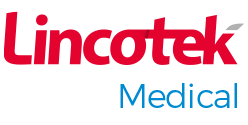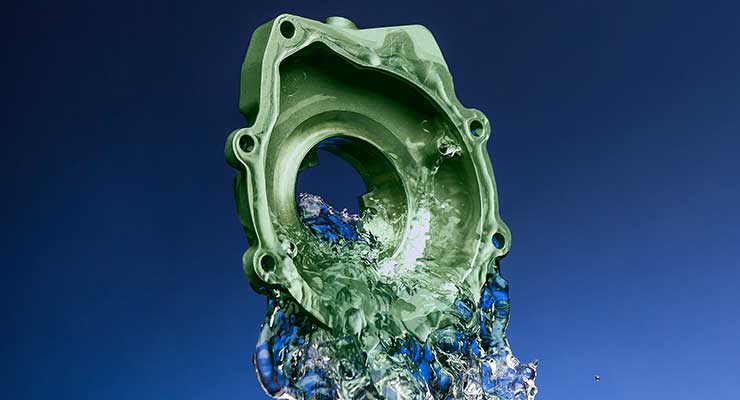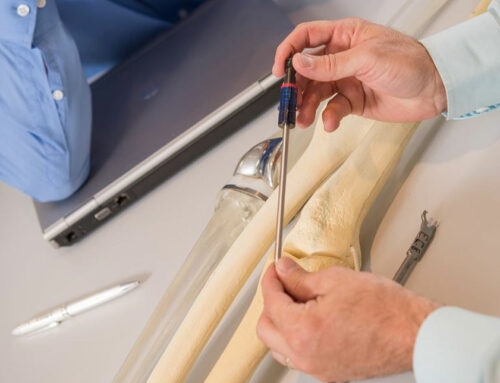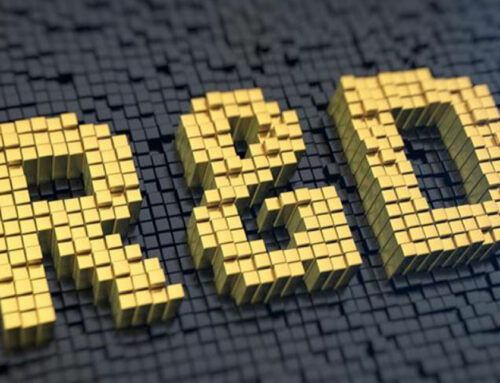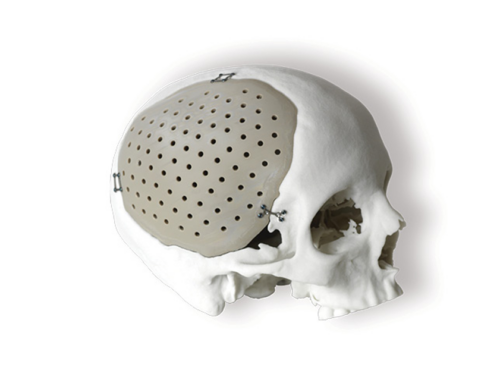Precision Coatings patented Micralox, microcrystalline aluminum oxide, provides a solution incorporating all the beneficial features of traditional anodize with Micralox enhanced ability to withstand today’s aggressive sterilization protocols. Image courtesy of Precision Coating Company.
Orthopedic device manufacturers are seeking solutions to address osseointegration, anti-bacterial, and product identification challenges.
Source: ODT Orthopedic Design & Technology |Mark Crawford, Contributing Writer
With the contribution of Francesco Robotti, Technology Business Development Manager for Lincotek Medical
May 20, 2020 | Orthopedic device and instrument manufacturers constantly search for new technologies that improve performance, reduce the risk of failure, and speed patient recoveries. They want devices that enhance functionality and are also easier to use—which are often dependent on ever-improving surface treatments and coatings. In many orthopedic market segments, OEMs are eager for product differentiation because most of the competing implants have similar designs and functions. Incorporating new surface modifications or coatings that improve osseointegration and reduce infection rates is a great way for OEMs to stand out from the crowd and increase market share.
“Changing demographics and growing health problems have increased the clinical demand for high-performing implants,” said Ulf Brogren, president of Promimic, an Austin, Texas-based provider of nano-thin surface modifications for orthopedic implants. “For example, combining novel implant designs with surface modifications, with the right bone chemistry and nano structure for better and faster integration, is an important approach for improving performance and patient outcomes.”
Tighter tolerances, stringent regulatory controls, and aggressive sterilization protocols to combat “superbugs” and other pathogens highlight the critical role coatings and surface treatments have in developing safer and more effective orthopedic devices. These surfaces must also be able to withstand aggressive sterilization cycles. OEMs are pushing their contract manufacturers to meet these challenges. For example, grit blasting has been used for many years to create rough surfaces but has several drawbacks. It is often a manual process, which leads to variations in roughness, which can result in quality issues. Grit particles can also stick to the surface of the device, creating a residue that must be removed by special cleaning methods.
“Many providers are looking for technology-based solutions that avoid these negatives and open up new options for product design,” said Erik Poulsen, medical market segment manager for GF Machining Solutions SA, a Switzerland-based provider of machining and laser-texturing solutions for the medical device industry.
Also, as orthopedic devices and components become smaller, more intricate, and more precise, manufacturers turn increasingly to exotic metal alloys for the flexibility and special properties they provide. “These parts require specialized finishing processes to ensure micro-precise removal of surface imperfections, within extremely tight tolerances,” said Pat Hayes, vice president of business development for Able Electropolishing, a Chicago, Ill.-based provider of electropolishing and other advanced metal improvement technologies for medical devices. “At the same time, these highly customized processes must be repeatable for consistently high-quality results. At our facility, this has driven increased collaboration in the process—even at the earliest stages of design—as well as investments in robotic automation.”
“From our perspective, the industry is going strong,” added Greg Marn, general manager for The Electrolizing Corporation of Ohio, a Cleveland, Ohio-based metal finishing company that provides chrome plating and anodizing services for the orthopedic device industry. “We are regularly getting new parts for processing and are working with several customers on new developmental parts. Even with the reduction in surgeries due to COVID-19, we are still seeing a high volume of parts.”
Latest Trends
Orthopedic device manufacturers are constantly looking for the proper balance between performance, cost, and deliverability (the length of time it takes to complete the process). Some high-performance coatings are so expensive they are not an option for typical orthopedic applications; others take so much time to apply they cannot be scaled for production. “Success means providing solutions that balance proven technologies and novel breakthroughs that are reliable and where execution is driven through extensive process validations,” said David DiBiasio, vice president of Precision Coating Company, a Woonsocket, R.I.-based provider of proprietary coatings for medical applications, including single-use devices and reusable instruments and tools. “OEMs are always on the lookout for solutions that enhance their products, allow for more innovative designs, and improve reliability.”
One approach that reduces cost and improves reliability and throughput, especially for high-volume production, is automation. Not only does automation improve quality and reduce labor hours per finished part, automated manufacturing processes become more consistent and repeatable, with parameters that can easily be recorded and optimized. For example, Rosler Metal Finishing USA, a Battle Creek, Mich.-based provider of surface finishing solutions for the medical device industry, has incorporated process monitoring into its mass finishing and wet blasting machines. “This allows the production engineers to keep an eye on a growing number of machine settings and process indicators,” said Rosler CEO Bernhard Kerschbaum.
Robotic automation is especially useful for optimizing the customized processes required for critical medical parts. Able Electropolishing has invested in 26 robots for its electropolishing and passivation processes. The robots have improved repeatability, quality, turnaround times, and the ability to scale production volumes. “With automation, we can provide completely customized processes and still ensure fast turnaround times for parts of all sizes and shapes,” said Hayes. “Every aspect of our process is customized for precise, repeatable results, from the orientation of the part during the process to the timing, variances, rinse line processes, and the chemical mix.”
Precision Coating has migrated to over 90-percent-automated application of its coatings. Using state-of-the-art programmable process control robots, “we can now deposit coatings at tolerance specifications as tight as plus or minus one-ten-thousandth of an inch with even coating dispersion across long lengths—something that was considered very challenging in the past,” added DiBiasio.
Orthopedic device R&D continues to focus on improving osseointegration, especially for spinal fusion and total-knee implants. Preferred, well-tested substrates include metals such as stainless steel, titanium, or cobalt-chromium alloys, ceramics such as ZTA (zirconia-toughened alumina), and polymers such as polyethylene or polyetheretherketone (PEEK). Although these materials show excellent mechanical and/or wear characteristics, they are bioinert. This can be alleviated through the use of osseointegrative coatings such as calcium phosphates, “which are very popular because they give specific biocompatibility properties to functional parts,” said Francesco Robotti, technology business development manager for Lincotek Medical, a global contract manufacturer that provides casting, machining, plasma spray coatings, and other technologies for the medical industry. “Another way to enhance osseointegrative functionality is by increasing the surface roughness or porosity by using sinter beads, porous plasma spray, or additive manufacturing techniques.”
Other types of coatings are intended to inhibit metal ion release—for example, physical vapor deposition (PVD) coatings made of titanium nitride or titanium-niobium nitride or multilayer combinations, which are typically applied to cobalt-chrome parts. “These provide excellent wear performance and resolve sensitivity issues for people who are allergic to certain metal ions,” said Robotti.
What OEMs Want
Process improvements such as reductions in cycle times, reduced use of process consumables, and fewer labor hours are just a few of the demands made by the manufacturers, preferably delivered with lower production costs. Quality is always the top priority—meaning the ability to reliably have the same surface on every part, in every batch. The second-most important priority is the use of automation to improve quality, avoid errors, increase throughput, and reduce cost.
OEMs look to their supply chain partners to help them differentiate their products through enhanced designs and capabilities—this can create new challenges, such as multiple different types of surfaces or “zones” on a single implant. With traditional manufacturing, this requires multiple steps of masking, surface treatment (grit blasting or other technologies), and cleaning. These are time- and labor-intensive processes, so OEMs turn to their contract manufacturers (CMs) for alternative solutions that speed up delivery and reduce cost, without sacrificing quality.
“Cost and performance balance, delivery time, scalability for production, and a combination of cosmetic appeal and function are the most common requests of OEMs for coating applications,” said DiBiasio. “This includes the ability to color-code products for reliable identification and the development of more complex instruments that can meet multiple functions in operating room procedures. As always, reducing risk is important; this includes making sure that the product remains fully traceable across its lifecycle.”
Chrome plating of instruments is a common request from OEMs. The durability of chrome provides prolonged service and can maintain the appearance of the instruments longer. Chrome also increases lubricity, thereby reducing galling on mating parts, which improves functionality. Another benefit of the chrome plating is it provides improved contrast for laser marking, making unique device identifiers (UDI) more legible.
OEMs are also requesting processing for 3D-printed parts. Their complex geometries can lead to unique processing challenges. “Trends we are seeing with respect to metal finishing services are an increased number of 3D-printed parts being processed, more complex masking requests, more instruments being chrome plated, and demand for better color uniformity,” said Marn.
Surface cleanliness is another consideration for medical device manufacturers (MDMs), especially for smaller and more complex devices made with multiple materials. With biocompatibility, performance, and anti-infection always at the forefront, MDMs prefer to use technologies that leave surfaces clean and free of residue—for example, electropolishing can remove microscopically precise amounts of surface material, which is essential for many critical metal parts.
“Medical device OEMs have to incorporate increasingly stringent standards around cleanability and pathogen resistance,” said Hayes. “Corrosion resistance is another critical characteristic. With the dramatic advances in medical technology, our processes must keep up with state-of-the-art protocols and technology that are as exacting and reliable as the devices we are helping to manufacture.”
Technology Advancements
A wide array of technologies is needed to ensure that finishing processes for implants and other medical devices are precise and consistent, ensuring the highest quality results for form, fit, and function, as well as pathogen and corrosion resistance. It is also not just about meeting specs and tight tolerances—OEMs also want to get the job done quickly, with fewer steps, thereby saving time and money and speeding up delivery of products into the marketplace. For example, Rosler has developed the Multi-Surf-Finisher for faster processing. Four spindles hold the work pieces and immerse them in a rotating work bowl filled with media, which allows the simultaneous, high-intensity processing of four work pieces. “Guided by one or more integrated, six-axis robot systems, and controlled by computer, the parts pass through eight stations, all fully automated with short cycle times.” said Kerschbaum. “The work pieces are immersed in the rotating work bowls filled with vibratory finishing media chosen specifically for the process.” This approach is particularly well-suited for high-quality, intricately formed work pieces.
Masking requests are getting more complex—for example, masking on small screws and other various spinal surgery components. “As more types of parts are developed and used in a given procedure, differentiating them becomes increasingly important,” said Marn. “We are asked to mask features such as only threads, select surfaces, hexalobe sockets, etc. We have developed a wide range of masking that allows us to selectively anodize select features of parts. More customers also want to combine Type II (gray) and Type III (color) titanium anodization on the same part. The Type II provides functional benefits and the Type III color provides the identification of different part sizes or orientations.”
Creating structures on surfaces with nanosecond or femtosecond laser sources allows multiple types of surfaces on a single device, without masking, and can be fully integrated into an automated environment. “Lasers can create very different surfaces, one right next to the other,” said Poulsen. “There is no need to mask part of the product, blast, remove the masking, re-mask, and blast a second area. Both surfaces can be created in a single set-up.” This process can also be outfitted with automatic loading and unloading to the laser cell, Poulsen noted, using GF Machining’s System 3R pallet with zero-point positioning technology.
Additive manufacturing (AM) continues to assume a larger role in creating innovative structures for implant surfaces that aid in osseointegration. For example, creating a porous titanium surface structure into which bone can grow greatly improves the odds of successful joint-replacement surgeries. AM techniques can create open cell porous structures as the orthopedic implant is being manufactured. “We look specifically at the optimal balance among compressive strength, pore size, strut size, porosity, and wear resistance,” said Robotti. “There is a specific range of pore sizes that best facilitates the colonization of the titanium by the host bone. When it comes to interconnection, pores must be large enough to accommodate the proper circulation of body fluid.”
“With thin coatings and surface modifications, it is actually possible to combine a surface modification with a micro porous 3D-printed implant design, without clogging the pores,” added Brogren. “This is not possible with traditional plasma-sprayed coatings.”
Regulatory policies require UDIs on products or parts to make them completely traceable. Applying the UDI is more than simply stamping a number on a part—ink chemistry and surface composition are important and UDIs must be able to survive harsh user environments, such as multiple cycles of sterilization.
Precision Coating’s Sanford Print and BW digital printing process was designed to mark in black and/or white at the interface between the coating and the substrate, for both flat and complex surfaces. Using the latest laser technology, the application affects only the interface, allowing the anodic coating to remain intact after marking with all of the protective properties of the coating in place. “Conventional laser marking ablates the coating and creates weaknesses for corrosion to propagate,” said DiBiasio. “The markings can also be applied on complex substrates that allow for innovative equipment designs. Combined with Precision Coating’s MICRALOX, a patented, microcrystalline aluminum oxide coating developed for harsh sterilization environments, this system preserves both the coating integrity and the markings for the life of the instrument.”
Anti-Bacterial Surfaces
The challenges surrounding antibiotic-resistant bacteria such as methicillin-resistant Staphylococcus aureus (MRSA) have driven greater collaboration among MDMs and healthcare researchers to find ways to reduce infection rates. For example, “we collaborate with a number of medical OEMs during the design and prototyping stages to avoid surface flaws that can trap liquids or pathogens and impede the ability to achieve the best results at the finishing stage,” said Hayes.
Research shows surface textures and patterns are increasingly important in reducing infections related to implants. A recent academic study compared biofilm formation on a laser-treated titanium surface to a conventional grit-blasted surface. The laser-treated surface was characterized by regularly spaced 20 µm-diameter circular holes with a concave bottom and 30-µm distance between centers. Results showed biofilm formation was significantly lower on the lasered surface compared to the grit-blasted surface.1
Another way of enhancing the surface properties of titanium implants to enable bone tissue integration is electrochemical anodization. This cost-effective process produces nanostructures based on the electrolytic growth of columnar titanium oxide layers. “By mastering the electrolyte composition and voltage, a regular array of pores with controlled diameters ranging from 15 to 200 nm is easily produced,” stated Guy Louarn, professor at the University of Nantes’ Jean Rouxel Institute of Materials in Nantes, France.2
Researchers are also developing anti-biofilm surfaces that use silver or gallium as the anti-bacterial-adhesion agent. “An osseointegrative coating that is also anti-fouling could be the next big thing in orthopedics,” said Robotti. “However, such a surface would be much more similar to a pharmaceutical product, which would create important consequences regarding regulatory approval.”
Researchers at Purdue University have developed a laser etching process that instantaneously kills bacteria on copper surfaces. Copper is well-known for its antimicrobial properties, but it takes hours for native copper surfaces to kill bacteria. Using lasers, textures were etched into a copper surface, increasing overall surface area. “Antibiotic resistance is a big challenge right now,” said Purdue University assistant professor of materials engineering Rahim Rahimi. “We developed a one-step laser-texturing technique that effectively enhances the bacteria-killing properties of copper’s surface.3
Moving Forward
Forward-thinking coating providers will stay ahead of the technology curve and integrate new technologies such as advanced laser processing, automation, and machine learning into their core processes, thereby being able to meet the ever evolving and challenging OEM demands. This includes finding solutions for complex or customized devices made from new substrates that often don’t “take” to existing coating methods—which often pushes material science to the limits to find an innovative solution.
“Because these parts are increasingly intricate and fragile, some of the biggest challenges arise around making highly customized solutions repeatable at volumes of up to millions of parts annually,” said Hayes. “The requirements of customized handling, fixturing, automation, and finishing within extremely precise tolerances are complex and the results have to be perfect, every single time.”
Robotic automation will continue to transform the ability to provide custom finishing processes like electropolishing for medical parts of all sizes, shapes, and intricacies. The development of new alloys for surface coatings is ongoing. For example, an international research project, led by the University of Sydney’s School of Aerospace, Mechanical, and Mechatronic Engineering, has developed a new plasma coating for bone implants with the aim of decreasing postoperative complications. The study investigated the interaction of plasma-generated coatings with human-derived stem cells. Results showed the new coating could enhance the functionality of bone-producing cells, allowing an implant to bind firmly to a host bone. “This research shows great promise for the creation of a new class of robust, bio-active surfaces for orthopedic implants,” said lead researcher Behnam Akhavan.4
Innovations in surface treatments and coatings—new materials and alloys, application technologies, and other production methods—are advancing rapidly, making it increasingly difficult for OEMs to keep up. In response, OEMs outsource this important work to CM partners that have the know-how to design and implement the best surface/coating solutions for these challenging projects. Getting surfacing/coating experts involved early in the design process is essential for a smooth manufacturing experience. For example, Able Electropolishing’s “Finish First Methodology” provides R&D input, prototyping, and validating manufacturing process on production finishing equipment, not in a laboratory setting. “We run prototypes in our state-of-the-art facility and ensure parts are optimally designed for metal finishing, getting the finished product into assembly sooner,” said Hayes.
“Involve the process and equipment experts right from the beginning of the project,” added Kerschbaum. “This is key to ensure the process is developed and optimized, before the equipment and level of automation is chosen. Only a stable process can be automated without running into issues down the road. It is best to bring on a partner that can handle the entire process, which will avoid the finger pointing if something goes wrong.”
References
Mark Crawford is a full-time freelance business and marketing/communications writer based in Madison, Wis. His clients range from startups to global manufacturing leaders. He also writes a variety of feature articles for regional and national publications and is the author of five books.
